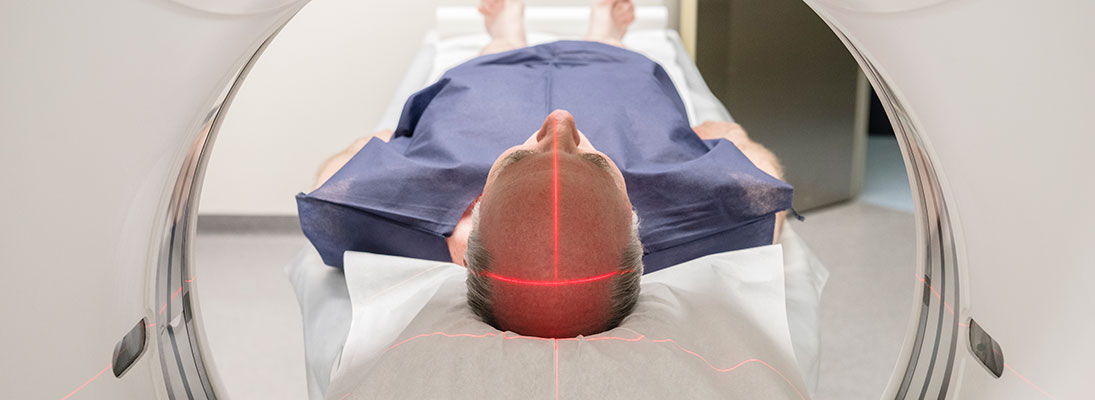
Neurosciences
Neurosciences
Leading-edge diagnostic tools that lead to quicker diagnoses and faster treatment.
Neurodiagnostics is the analysis and monitoring of your nervous system to help doctors decide and perform effective treatment for conditions like epilepsy, seizure disorders, blurred vision or hearing loss.
Our neurodiagnostics team is made up of certified technicians who use advanced technological equipment to measure electrical activity within your brain and nervous system.
These measurements are reviewed by your neurologist, and the results shared with your primary care or referring physician to more accurately diagnose your neurological condition.
Neurodiagnostic Procedures
A neurodiagnostic technologist will use specialized equipment to learn more about your condition so treatment can be tailored for you. These procedures include:
This is a two-part study. The Nerve Conduction Study (NCS) evaluates electrical potentials from peripheral nerves. The first portion will be performed by a technologist who stimulates the nerve with an electrical current then records how long it takes the nerve impulse to reach the muscle. Patients referred for NCS tests suffer from nerve conditions which produce symptoms such as:
Numbness
Tingling
Muscle pain, weakness or cramping
Abnormal movements
Pain or loss of sensation
Neurological diseases affecting primarily the feet, legs, hands, arms, back and neck
The second portion is performed by the neurologist. Electromyography (EMG) measures the electrical response coming from the muscle using a special, thin needle.
The Electroencephalogram (EEG) is a recording of the ongoing electrical activity of the brain. An EEG is used to assist in the diagnosis of epilepsy and a variety of neurological symptoms. These symptoms include:
Common headaches
Dizziness
Seizure disorders
Convulsions
Changes in awareness or unexplained loss of consciousness
Prolonged or unexplained coma
Strokes
Degenerative brain disease
EEGs also are used in determining causes for staring spells or inattentiveness in children.
In conducting an EEG, highly sensitive monitoring equipment records the activity through electrodes that are placed at measured intervals on a patient’s scalp. The test is not painful.
Intraoperative neuromonitoring is monitoring performed during surgery, which is used to give surgeons feedback. It monitors neurological structures most at risk during surgical procedures. It provides data on the functional integrity of the nervous system, including the spinal cord, the brain, and the blood supply to those areas. Surgical procedures that receive intraoperative neuromonitoring include:
Spinal surgery for scoliosis
Tumors and aneurysms
Vascular surgery
ENT surgeries
An EEG is a recording of the ongoing electrical activity of the brain. It's used to assist in the diagnosis of epilepsy and a variety of neurological symptoms. In a sleep deprived EEG or (SD/EEG), the patient may be asked to stay awake extra hours the night before the test. All of these activities can help reveal different brain patterns that are useful for diagnosis.
The simultaneous recording of EEG and videotaped behavior over extended periods of time is referred to as long-term monitoring (LTM). It's useful in diagnosing patients with intermittent or infrequent disturbances as well as in the diagnosis of seizures and other neurological disorders. The LTM is used to assist in the diagnosis of epilepsy and a variety of neurological symptoms.
The SSEP is used to diagnose issues with the nervous system, including the spinal cord and nerves located within the body. The test works by sending electric pulses to different areas of the body and monitoring the electric activity in the brain that results. During the test, the technician attaches electrodes to the scalp and other places along the body. Small, painless electric shocks are sent to the electrodes on the body and the electrical activity in the brain is recorded.
Evoked potentials are recordings of electrical activity from the brain, spinal nerves or sensory receptors in response to specific external stimulation. Evoked potentials are helpful in evaluating a number of different neurological problems, including spinal cord injuries, hearing loss, blurred vision and blind spots, acoustic neuroma and optic neuritis. Visual evoked potentials, or VER, uses visual stimuli while brainstem auditory evoked response, or BAER, uses auditory stimuli.
Valley patients benefit from neuroscience expansion

To increase access to care for underserved populations, Community Health Partners is investing in medical research and advanced neuro technology.
We use cookies and other tools to optimize and enhance your experience on our website. View our Privacy Policy.

